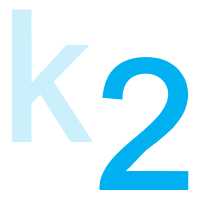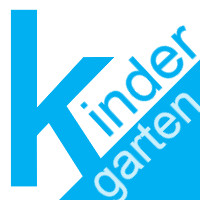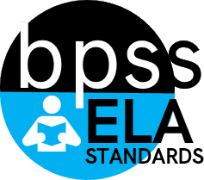K Grade English
 Standards Glossaries
Standards Glossaries
| K Grade English | 1st Grade English | 2nd Grade English |
 Standards Glossaries
Standards Glossaries
| 3rd Grade English | 4th Grade English | 5th Grade English |
 Standards Glossaries
Standards Glossaries
| 6th Grade English | 7th Grade English | 8th Grade English |
 Standards Glossaries
Standards Glossaries
| 9th Grade English | 10th Grade English | 11th Grade English | 12th Grade English |
 Standards Glossaries
Standards Glossaries
| HS Journalism | HS Speech |
E |
|---|
ELA-00.RF.03.p3 | |
ELA-00.RF.04ELA-00.RF.04 Read with sufficient accuracy and fluency to support comprehensionSub-Standards:
a. Read grade level text with purpose and understanding.
b. Read grade level text orally with accuracy, appropriate rate, and expression on successive readings.
c. Use context to confirm or self-correct word recognition and understanding, rereading as necessary.
Student Learning Targets:Knowledge Targets
Reasoning Targets
Skills (Performance) Targets
Proficiency ScaleThe student can ...1 Beginning... with help, demonstrates a partial understanding of some of the simpler details and processes (Score 2.0 content) and some of the more complex ideas and processes (Score 3.0 content).Start 2 Developing... demonstrates no major errors or omissions regarding the simpler details and processes but exhibits major errors or omissions regarding the more complex ideas and processes (Score 3.0 content).Simple 3 Proficient“The Standard.”... demonstrates no major errors or omissions regarding any of the information and processes that were end of instruction expectations. Target 4 Advanced... demonstrates in-depth inferences and applications regarding more complex material that go beyond end of instruction expectations.Complex ResourcesVocabulary
Websites
| |||
ELA-00.RINarrative for Informational Reading Strand:The primary purpose of informational text (non-fiction) is to inform the reader about the natural or social world. Different from literaure (fiction), informational text does not utilize characters. In this strand students are expected to determine the topic (who or what the text is about). Students will also ask and answer questions about the topic of the text and retell what they read. Informational text offers a variety of structures to assist the readers in finding information quickly and efficiently. These might include a table of contents, bold or italicized text, gloassaries, embedded definitions for specialized vocabulary, realistic illustrations of photos, captions and other labels, and graphs and charts. Continued work on reading comprehension standards will heighten student abilities to read more age appriopriate informational (non-fiction) text. Teachers use assessment and observation to determine if students are ready to progress to more challenging reading selections. Each child is unique, so be flexible, and trust your judgment as you assist your child. Together teachers and parents can help students make better choices when selecting books to read. Our youngest readers benefit from rereading text and text with high repetition. Although levels of reading determined through observation and assessment are valuable, caution is important in not confining children to a text level. Young readers can progress through levels of text quickly, but not all children progress at the same pace, which is expected. Increasing the frequency of reading is the highest predictor of success at any grade level. Building a child’s confidence, through successful experiences with reading, will encourage that desire to read more. Developing successful, life-long readers is our ultimate goal.
How to Help Your Child At Home with the Informational Text Strand:
ResourcesCalculation Method for StrandsStrands are larger groups of related standards. The Strand Grade is a calculation of all the related standards. Click on the standard name below each strand to access the learning targets and proficiency scales for each strand's related standards. | |
ELA-00.RI.01 | |
ELA-00.RI.02
ELA-00.RI.02 With prompting and support, identify the main topic and retell key details of a text.Student Learning Targets:Knowledge Targets
Reasoning Targets
Skills (Performance) Targets
Proficiency ScaleThe student can ...1 Beginning... with help, demonstrates a partial understanding of some of the simpler details and processes (Score 2.0 content) and some of the more complex ideas and processes (Score 3.0 content).... identifies the main topic and/or retells some information with few details from the text. 2 Developing... demonstrates no major errors or omissions regarding the simpler details and processes but exhibits major errors or omissions regarding the more complex ideas and processes (Score 3.0 content).... identifies the main topic and/or retells some information with few details from the text. 3 Proficient“The Standard.”... demonstrates no major errors or omissions regarding any of the information and processes that were end of instruction expectations. ... identify the main topic and retell some of the important key details or events from a text at the end of the emergent reading stage. 4 Advanced... demonstrates in-depth inferences and applications regarding more complex material that go beyond end of instruction expectations.... identify the main topic of the text as part of retelling the important key details or events, including only the important information from a text at the end of the early reading stage. ResourcesVocabulary
Websites
| |||
ELA-00.RI.03
ELA-00.RI.03 With prompting and support, describe the connection between two individuals, events, ideas, or pieces of information in a text.Student Learning Targets:Knowledge Targets
Reasoning Targets
Skills (Performance) Targets
Proficiency ScaleThe student can ...1 Beginning... with help, demonstrates a partial understanding of some of the simpler details and processes (Score 2.0 content) and some of the more complex ideas and processes (Score 3.0 content).Start 2 Developing... demonstrates no major errors or omissions regarding the simpler details and processes but exhibits major errors or omissions regarding the more complex ideas and processes (Score 3.0 content).Simple 3 Proficient“The Standard.”... demonstrates no major errors or omissions regarding any of the information and processes that were end of instruction expectations. Target 4 Advanced... demonstrates in-depth inferences and applications regarding more complex material that go beyond end of instruction expectations.Complex ResourcesVocabulary
Websites
| |||
ELA-00.RI.04
ELA-00.RI.04 With prompting and support, ask and answer questions about unknown words in a text.Student Learning Targets:Knowledge Targets
Reasoning Targets
Skills (Performance) Targets
Proficiency ScaleThe student can ...1 Beginning... with help, demonstrates a partial understanding of some of the simpler details and processes (Score 2.0 content) and some of the more complex ideas and processes (Score 3.0 content).Start 2 Developing... demonstrates no major errors or omissions regarding the simpler details and processes but exhibits major errors or omissions regarding the more complex ideas and processes (Score 3.0 content).Simple 3 Proficient“The Standard.”... demonstrates no major errors or omissions regarding any of the information and processes that were end of instruction expectations. Target 4 Advanced... demonstrates in-depth inferences and applications regarding more complex material that go beyond end of instruction expectations.Complex ResourcesVocabulary
Websites
| |||
ELA-00.RI.05
ELA-00.RI.05 Identify the front cover, back cover, and title page of a book.Student Learning Targets:Knowledge Targets
Reasoning Targets
Skills (Performance) Targets
Proficiency ScaleThe student can ...1 Beginning... with help, demonstrates a partial understanding of some of the simpler details and processes (Score 2.0 content) and some of the more complex ideas and processes (Score 3.0 content).Start 2 Developing... demonstrates no major errors or omissions regarding the simpler details and processes but exhibits major errors or omissions regarding the more complex ideas and processes (Score 3.0 content).Simple 3 Proficient“The Standard.”... demonstrates no major errors or omissions regarding any of the information and processes that were end of instruction expectations. Target 4 Advanced... demonstrates in-depth inferences and applications regarding more complex material that go beyond end of instruction expectations.Complex ResourcesVocabulary
Websites
| |||
ELA-00.RI.06
ELA-00.RI.06 Name the author and illustrator of a text and define the role of each in presenting the ideas or information in a text.Student Learning Targets:Knowledge Targets
Reasoning Targets
Skills (Performance) Targets
Proficiency ScaleThe student can ...1 Beginning... with help, demonstrates a partial understanding of some of the simpler details and processes (Score 2.0 content) and some of the more complex ideas and processes (Score 3.0 content).Start 2 Developing... demonstrates no major errors or omissions regarding the simpler details and processes but exhibits major errors or omissions regarding the more complex ideas and processes (Score 3.0 content).Simple 3 Proficient“The Standard.”... demonstrates no major errors or omissions regarding any of the information and processes that were end of instruction expectations. Target 4 Advanced... demonstrates in-depth inferences and applications regarding more complex material that go beyond end of instruction expectations.Complex ResourcesVocabulary
Websites
| |||
ELA-00.RI.07
ELA-00.RI.07 With prompting and support, describe the relationship between illustrations and the text in which they appear (e.g., what person, place, thing, or idea in the text an illustration depicts).Student Learning Targets:Knowledge Targets
Reasoning Targets
Skills (Performance) Targets
Proficiency ScaleThe student can ...1 Beginning... with help, demonstrates a partial understanding of some of the simpler details and processes (Score 2.0 content) and some of the more complex ideas and processes (Score 3.0 content).Start 2 Developing... demonstrates no major errors or omissions regarding the simpler details and processes but exhibits major errors or omissions regarding the more complex ideas and processes (Score 3.0 content).Simple 3 Proficient“The Standard.”... demonstrates no major errors or omissions regarding any of the information and processes that were end of instruction expectations. Target 4 Advanced... demonstrates in-depth inferences and applications regarding more complex material that go beyond end of instruction expectations.Complex ResourcesVocabulary
Websites
| |||
ELA-00.RI.08
ELA-00.RI.08 With prompting and support, identify the reasons an author gives to support points in a text.Student Learning Targets:Knowledge Targets
Reasoning Targets
Skills (Performance) Targets
Proficiency ScaleThe student can ...1 Beginning... with help, demonstrates a partial understanding of some of the simpler details and processes (Score 2.0 content) and some of the more complex ideas and processes (Score 3.0 content).Start 2 Developing... demonstrates no major errors or omissions regarding the simpler details and processes but exhibits major errors or omissions regarding the more complex ideas and processes (Score 3.0 content).Simple 3 Proficient“The Standard.”... demonstrates no major errors or omissions regarding any of the information and processes that were end of instruction expectations. Target 4 Advanced... demonstrates in-depth inferences and applications regarding more complex material that go beyond end of instruction expectations.Complex ResourcesVocabulary
Websites
| |||
ELA-00.RI.09
ELA-00.RI.09 With prompting and support, identify basic similarities in and differences between two texts on the same topic (e.g., in illustrations, descriptions, or procedures).Student Learning Targets:Knowledge Targets
Reasoning Targets
Skills (Performance) Targets
Proficiency ScaleThe student can ...1 Beginning... with help, demonstrates a partial understanding of some of the simpler details and processes (Score 2.0 content) and some of the more complex ideas and processes (Score 3.0 content).Start 2 Developing... demonstrates no major errors or omissions regarding the simpler details and processes but exhibits major errors or omissions regarding the more complex ideas and processes (Score 3.0 content).Simple 3 Proficient“The Standard.”... demonstrates no major errors or omissions regarding any of the information and processes that were end of instruction expectations. Target 4 Advanced... demonstrates in-depth inferences and applications regarding more complex material that go beyond end of instruction expectations.Complex ResourcesVocabulary
Websites
| |||
ELA-00.RI.10
ELA-00.RI.10 Actively engage in group reading activities with purpose and understanding.Student Learning Targets:Knowledge Targets
Reasoning Targets
Skills (Performance) Targets
Proficiency ScaleThe student can ...1 Beginning... with help, demonstrates a partial understanding of some of the simpler details and processes (Score 2.0 content) and some of the more complex ideas and processes (Score 3.0 content).Start 2 Developing... demonstrates no major errors or omissions regarding the simpler details and processes but exhibits major errors or omissions regarding the more complex ideas and processes (Score 3.0 content).Simple 3 Proficient“The Standard.”... demonstrates no major errors or omissions regarding any of the information and processes that were end of instruction expectations. Target 4 Advanced... demonstrates in-depth inferences and applications regarding more complex material that go beyond end of instruction expectations.Complex ResourcesVocabulary
Websites
| |||
ELA-00.RLNarrative for Literature Strand:Reading literature (fiction) allows students to learn about other lives and times that relate to their own personal experiences. In this strand, students will ask and answer questions about key details (characters, setting, plot), along with retelling what they have read. Literature (fiction) helps readers learn important life lessons through the lives of the characters, comparing their own experiences with the experiences of the characters they read about. Reading literature (fiction) allows us to learn to appreciate the beauty of the language, and to be articulate speakers and writers. Continued work on reading comprehension standards will heighten student abilities to read more complex literature (fiction) text. Teachers use assessment and observation to determine if students are ready to progress to more challenging reading selections. Each child is unique, so be flexible, and trust your judgment as you assist your child. Together teachers and parents can help students make better choices when selecting books to read. Our youngest readers benefit from rereading text and text with high repetition. Although levels of reading determined through observation and assessment are valuable, caution is important in not confining children to a text level. Young readers can progress through levels of text quickly, but not all children progress at the same pace, which is expected. Increasing the frequency of reading is the highest predictor of success at any grade level. Building a child’s confidence, through successful experiences with reading, will encourage that desire to read more. Developing successful, life-long readers is our ultimate goal. Continued work on reading comprehension standards will heighten student abilities to read age appropriate literature (fiction) text. Teachers use assessment and observation to determine if students are ready to progress to more challenging reading selections. Each child is unique, so be flexible, and trust your judgment as you assist your child. Together teachers and parents can help students make better choices when selecting books to read. Our youngest readers benefit from rereading text and text with high repetition. Although levels of reading determined through observation and assessment are valuable, caution is important in not confining children to a text level. Young readers can progress through levels of text quickly, but not all children progress at the same pace, which is expected. Increasing the frequency of reading is the highest predictor of success at any grade level. Building a child’s confidence, through successful experiences with reading, will encourage that desire to read more. Developing successful, life-long readers is our ultimate goal.
How to Help Your Child At Home with the Literature Strand:
Resources:
Calculation Method for StrandsStrands are larger groups of related standards. The Strand Grade is a calculation of all the related standards. Click on the standard name below each strand to access the learning targets and proficiency scales for each strand's related standards. | |
ELA-00.RL.01 | |
ELA-00.RL.02
ELA-00.RL.02 With prompting and support, retell familiar stories, including key/supporting details.Student Learning Targets:Knowledge Targets
Reasoning Targets
Skills (Performance) Targets
Proficiency ScaleThe student can ...1 Beginning... with help, demonstrates a partial understanding of some of the simpler details and processes (Score 2.0 content) and some of the more complex ideas and processes (Score 3.0 content).Start 2 Developing... demonstrates no major errors or omissions regarding the simpler details and processes but exhibits major errors or omissions regarding the more complex ideas and processes (Score 3.0 content).Simple 3 Proficient“The Standard.”... demonstrates no major errors or omissions regarding any of the information and processes that were end of instruction expectations. Target 4 Advanced... demonstrates in-depth inferences and applications regarding more complex material that go beyond end of instruction expectations.Complex ResourcesVocabulary
Websites
| |||
ELA-00.RL.03
ELA-00.RL.03 With prompting and support, identify characters, settings, and major events in a story.Student Learning Targets:Knowledge Targets
Reasoning Targets
Skills (Performance) Targets
Proficiency ScaleThe student can ...1 Beginning... with help, demonstrates a partial understanding of some of the simpler details and processes (Score 2.0 content) and some of the more complex ideas and processes (Score 3.0 content).Start 2 Developing... demonstrates no major errors or omissions regarding the simpler details and processes but exhibits major errors or omissions regarding the more complex ideas and processes (Score 3.0 content).Simple 3 Proficient“The Standard.”... demonstrates no major errors or omissions regarding any of the information and processes that were end of instruction expectations. Target 4 Advanced... demonstrates in-depth inferences and applications regarding more complex material that go beyond end of instruction expectations.Complex ResourcesVocabulary
Websites
| |||
ELA-00.RL.04
ELA-00.RL.04 Ask and answer questions about words with unknown meanings, in a story or poem.Student Learning Targets:Knowledge Targets
Reasoning Targets
Skills (Performance) Targets
Proficiency ScaleThe student can ...1 Beginning... with help, demonstrates a partial understanding of some of the simpler details and processes (Score 2.0 content) and some of the more complex ideas and processes (Score 3.0 content).Start 2 Developing... demonstrates no major errors or omissions regarding the simpler details and processes but exhibits major errors or omissions regarding the more complex ideas and processes (Score 3.0 content).Simple 3 Proficient“The Standard.”... demonstrates no major errors or omissions regarding any of the information and processes that were end of instruction expectations. Target 4 Advanced... demonstrates in-depth inferences and applications regarding more complex material that go beyond end of instruction expectations.Complex ResourcesVocabulary
Websites
| |||
ELA-00.RL.05
ELA-00.RL.05 Recognize common types of texts using their unique features throughout the selection.Student Learning Targets:Knowledge Targets
Reasoning Targets
Skills (Performance) Targets
Proficiency ScaleThe student can ...1 Beginning... with help, demonstrates a partial understanding of some of the simpler details and processes (Score 2.0 content) and some of the more complex ideas and processes (Score 3.0 content).Start 2 Developing... demonstrates no major errors or omissions regarding the simpler details and processes but exhibits major errors or omissions regarding the more complex ideas and processes (Score 3.0 content).Simple 3 Proficient“The Standard.”... demonstrates no major errors or omissions regarding any of the information and processes that were end of instruction expectations. Target 4 Advanced... demonstrates in-depth inferences and applications regarding more complex material that go beyond end of instruction expectations.Complex ResourcesVocabulary
Websites
| |||
ELA-00.RL.06
ELA-00.RL.06 With prompting and support, name the author and illustrator of a story and define the role of each in telling the story.Student Learning Targets:Knowledge Targets
Reasoning Targets
Skills (Performance) Targets
Proficiency ScaleThe student can ...1 Beginning... with help, demonstrates a partial understanding of some of the simpler details and processes (Score 2.0 content) and some of the more complex ideas and processes (Score 3.0 content).Start 2 Developing... demonstrates no major errors or omissions regarding the simpler details and processes but exhibits major errors or omissions regarding the more complex ideas and processes (Score 3.0 content).Simple 3 Proficient“The Standard.”... demonstrates no major errors or omissions regarding any of the information and processes that were end of instruction expectations. Target 4 Advanced... demonstrates in-depth inferences and applications regarding more complex material that go beyond end of instruction expectations.Complex ResourcesVocabulary
Websites
| |||
ELA-00.RL.07
ELA-00.RL.07 With prompting and support, describe the relationship between illustrations and the story in which they appear.Student Learning Targets:Knowledge Targets
Reasoning Targets
Skills (Performance) Targets
Proficiency ScaleThe student can ...1 Beginning... with help, demonstrates a partial understanding of some of the simpler details and processes (Score 2.0 content) and some of the more complex ideas and processes (Score 3.0 content).Start 2 Developing... demonstrates no major errors or omissions regarding the simpler details and processes but exhibits major errors or omissions regarding the more complex ideas and processes (Score 3.0 content).Simple 3 Proficient“The Standard.”... demonstrates no major errors or omissions regarding any of the information and processes that were end of instruction expectations. Target 4 Advanced... demonstrates in-depth inferences and applications regarding more complex material that go beyond end of instruction expectations.Complex ResourcesVocabulary
Websites
| |||
ELA-00.RL.08 | |
ELA-00.RL.09
ELA-00.RL.09 With prompting and support, compare and contrast the adventures and experiences of characters in familiar stories.Student Learning Targets:Knowledge Targets
Reasoning Targets
Skills (Performance) Targets
Proficiency ScaleThe student can ...1 Beginning... with help, demonstrates a partial understanding of some of the simpler details and processes (Score 2.0 content) and some of the more complex ideas and processes (Score 3.0 content).Start 2 Developing... demonstrates no major errors or omissions regarding the simpler details and processes but exhibits major errors or omissions regarding the more complex ideas and processes (Score 3.0 content).Simple 3 Proficient“The Standard.”... demonstrates no major errors or omissions regarding any of the information and processes that were end of instruction expectations. Target 4 Advanced... demonstrates in-depth inferences and applications regarding more complex material that go beyond end of instruction expectations.Complex ResourcesVocabulary
Websites
| |||
ELA-00.RL.10
Student Learning Targets:Skills (Performance) Targets
Proficiency (Rubric) Scale
ResourcesWebsites
Vocabulary
| ||||||||||||||||||||||||||||||||||||||||



 Kindergarten
Kindergarten